Greenhouse Management with Growlink
Grow Link
JUNE 16, 2023
Growlink's AgTech platform empowers greenhouse growers with precision control, optimal resource utilization, improved yields, and increased ROI.
This site uses cookies to improve your experience. By viewing our content, you are accepting the use of cookies. To help us insure we adhere to various privacy regulations, please select your country/region of residence. If you do not select a country we will assume you are from the United States. View our privacy policy and terms of use.

Grow Link
JUNE 16, 2023
Growlink's AgTech platform empowers greenhouse growers with precision control, optimal resource utilization, improved yields, and increased ROI.

ATTRA
JUNE 3, 2024
The University of Copenhagen mapped the global extent of greenhouses , revealing that greenhouse cultivation is increasing rapidly and covers at least 1.3 Greenhouse cultivation in China accounts for more than 60% of the total global area. million hectares of the Earth’s surface.
This site is protected by reCAPTCHA and the Google Privacy Policy and Terms of Service apply.

Global Agtech Initiative
AUGUST 21, 2023
To effectively harness the potential of water in enhancing crop yields, an efficient and suitable irrigation system is of utmost importance. The post Greenhouse Technology: Why Choosing the Right Irrigation System Is the Key to Optimizing Crop Quality appeared first on Global Ag Tech Initiative.

Grow Link
JUNE 23, 2023
AI and IoT in greenhouse operations improves efficiency, boosts crop yields, reduces waste, and revolutionizes farming. Embrace AI as a tool, not a threat.

Grow Link
JUNE 30, 2023
As the world of farming evolves, so does our understanding of how to optimize greenhouse environments for maximum efficiency. One key factor that can make or break your greenhouse operation is light. So, let's shed some light on this vital topic!

Agritecture Blog
MARCH 24, 2023
On Agritecture Designer , you can compare CapEx, OpEx, and yields from vertical farms, greenhouses, or container farms to discover which would be best for your idea and local market. Agritecture’s consulting team is a big fan of greenhouses, which have a long history of commercial and private success.

Farmbrite
NOVEMBER 30, 2023
Gardening has taken a futuristic twist with the rise of hoophouses, greenhouses, and other nifty protective enclosures. In this blog, we're going to uncover the hidden treasures of growing under cover and share some groovy tips and tricks to make your hoophouses, greenhouses, and more the talk of the neighborhood. No problem!
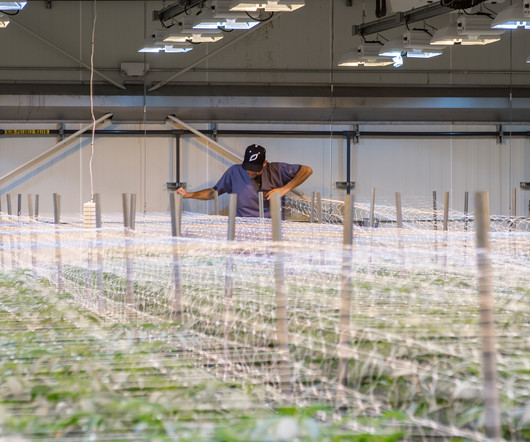
Grow Link
JULY 26, 2024
Growlink's AgTech platform empowers greenhouse growers with precision control, optimal resource utilization, improved yields, and increased ROI.
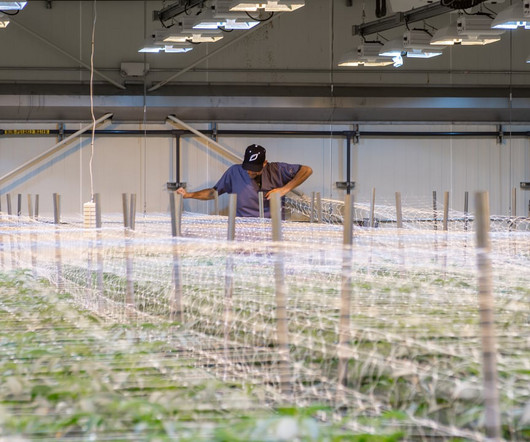
Grow Link
JULY 26, 2024
Growlink's AgTech platform empowers greenhouse growers with precision control, optimal resource utilization, improved yields, and increased ROI.

Agricultural Biodiversity
JANUARY 23, 2024
Bottom line: adding more crops to the current dominant rotation of wheat and maize increases yields and profits, sequesters more carbon in the soil and reduces overall greenhouse gas emissions. Not surprisingly, lower nitrogen fertiliser results in lower emissions of nitrous oxide, a greenhouse gas. million tonnes.
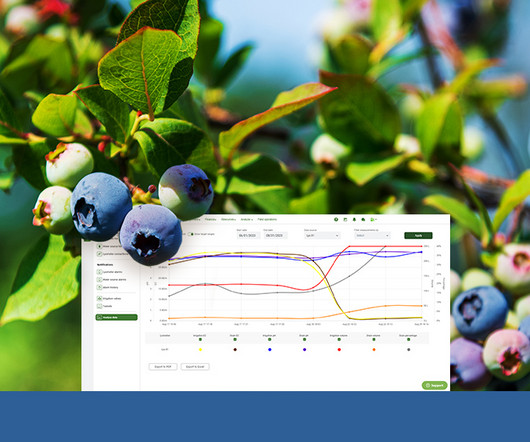
AGRIVI
SEPTEMBER 13, 2023
AGRIVI presents a new Fertigation Management Module , primarily intended for berries and vegetable cultivation in greenhouses in the substrate, that redefines how we nurture our crops. Moreover, integrated analytics provide meaningful insights that empower farmers to make informed decisions that directly impact crop health and yield.

Farming Secrets
NOVEMBER 4, 2024
What is the main contributor to the greenhouse gas effect? What would you think if I said water vapor contributes to up to 80 % of the Greenhouse gas effect and Carbon Dioxide only 11 %?How How would you approach reducing global warming if you took the perspective that Greenhouse gases are too much of a good thing in the wrong place?

ATTRA
DECEMBER 21, 2023
University of Kansas researchers published a study in the journal Nature Communications that shows crop diversity can help boost yields by preventing soil pathogens from thriving. “Monoculture&msash;planting vast areas with a single crop—is driven by technological reasons rather than biological ones.” ”

Food Politics
JANUARY 16, 2024
But the study delves into a more comprehensive analysis, considering factors beyond direct greenhouse gas emissions. Agricltural Systems: Impacts of soil carbon sequestration on life cycle greenhouse gas emissions in Midwestern USA beef finishing systems. Lower yields (but we overproduce meat anyway). The downside?

Agritecture Blog
SEPTEMBER 5, 2023
Understanding these dynamics and how to evaluate these new light solutions is important for greenhouse growers. Tailoring light to your cultivars Finetuning your lighting strategy according to cultivar is essential to greenhouse production, as light responses are notoriously cultivar-specific. Why does it matter?
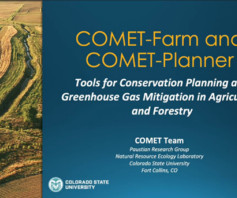
ATTRA
APRIL 16, 2024
Introduction COMET-Planner is a web-based greenhouse gas (GHG) evaluation tool used to provide modelled estimates of the greenhouse gas impacts of certain conservation practices utilized across various agricultural landscapes. To answer that question, we use a tool called COMET-Planner. tonnes per year, not zero.
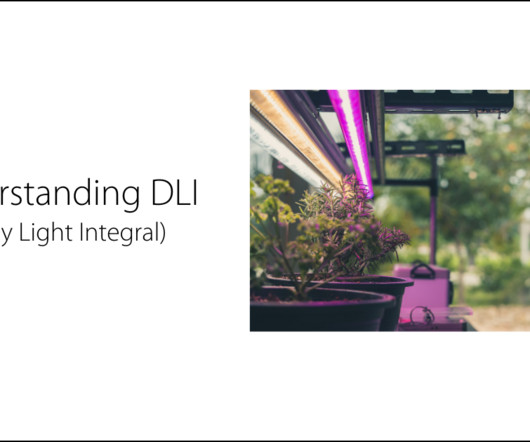
Grow Link
NOVEMBER 2, 2022
DLI is equally as important indoors as it is in an outdoor/greenhouse environment and should be utilized when trying to optimize your grow efficiency and overall plant health. DLI numbers that are too low will limit your plant’s growth potential which can translate directly to reduced yield and plant vigor.

AGRIVI
OCTOBER 12, 2023
AGRIVI teams up with ReddAgro, a pioneering Agri-Tech company specializing in delivering precision farming, greenhouse control and automation, and agricultural supply chain management solutions. ReddAgro is renowned for its expertise in bringing cutting-edge technologies to enhance agricultural practices.

ATTRA
DECEMBER 6, 2023
Now, Hardin wants to use the knowledge he’s gained to tackle some big challenges across the state by using biochar to clean up the Illinois River watershed, reduce greenhouse gas emissions, and help farmers improve the quality of their soil through his innovative initiative called the Carbon Chicken Project.
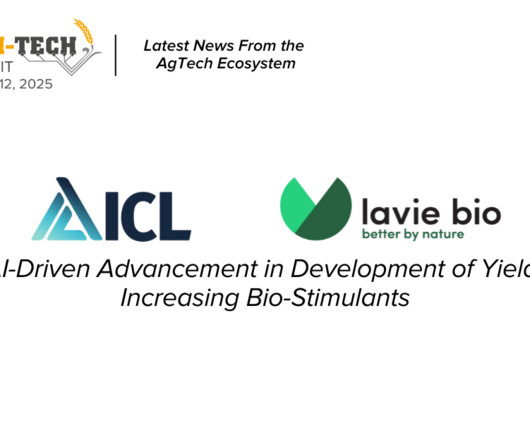
World Agri-Tech
JULY 22, 2024
By focusing on bio-stimulants that enhance crop resilience to such conditions, the collaboration has aimed to deliver tangible benefits to farmers, including a 5% to 10% increase in yield, on average. This success paves the way for field trials in both the U.S. and Brazil in the second half of 2024, with results available by year-end.

Modern Farmer
OCTOBER 23, 2023
“We’ve done testing from a high-tech, very controlled greenhouse to an open field in Egypt,” says Ryan Lefers, CEO and co-founder. Right now, Lefer and his team utilize their own greenhouses and nurseries to grow seedlings and will also look to sell them to consumers. In a hydroponic system, water is recirculated.

Agritecture Blog
AUGUST 2, 2023
ComCrop , Singapore's pioneering rooftop greenhouse farm, is making significant strides in the local agricultural landscape. ComCrop stands out as the first commercial rooftop farm in Singapore, utilizing five controlled environment agriculture (CEA) greenhouses spread across a vast 2,800 square meters. ComCrop ComCrop team members.
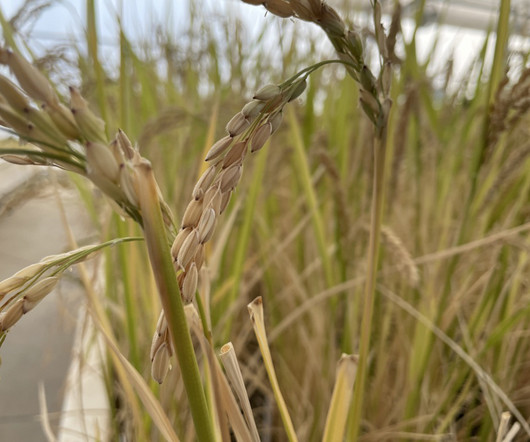
Modern Farmer
JANUARY 2, 2024
In one of the greenhouses on the Lundberg Family Farms acreage in northern California, there sits a binder. Rice growing in one of the Lundberg Family Farms test greenhouses. Farmers and breeders always want high-yield rice and, at the same time, try to breed a high-temperature tolerance or a high-salt tolerance.
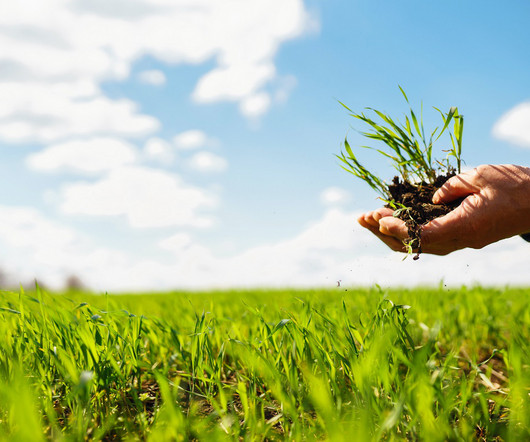
Cropaia
FEBRUARY 2, 2024
Furthermore, biofertilizers play a role in reducing greenhouse gas emissions, supporting climate change mitigation efforts. Improving Crop yields By enhancing nutrient uptake and plant health, biofertilizers ultimately lead to increased crop yields and improved crop quality.
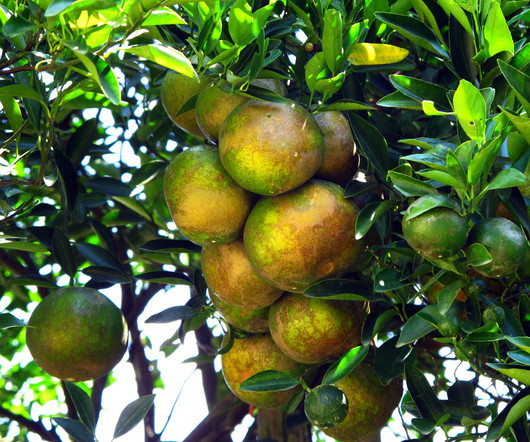
Modern Farmer
SEPTEMBER 14, 2023
In Florida, where citrus greening has shrunk the orange and grapefruit yields by more than half , the department of agriculture and community services has approved a new treatment from Massachusetts-based Invaio. We can start treating trees about two months out of the greenhouse and jump on those trees early,” says Gerrard. “By
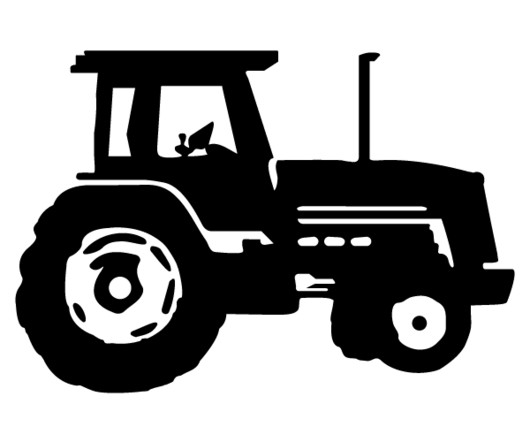
Modern Farmer
MARCH 5, 2024
Certainly, the change in availability is in part due to ease of imports and prevalence of greenhouses today. If there’s a fire or drought, crops can die off and yields go down. Declines in nutrients can come from using certain fertilizers or through selective breeding where the goal is high yield.

Food Tank
DECEMBER 1, 2023
Current food systems are responsible for one-third of global greenhouse gas emissions and for nearly 80 percent of biodiversity loss. In Mexico, climate change has caused a decline in yields—including a 35 percent reduction in the bean crop while increasingly ferocious hurricanes have wiped out fruit crops.
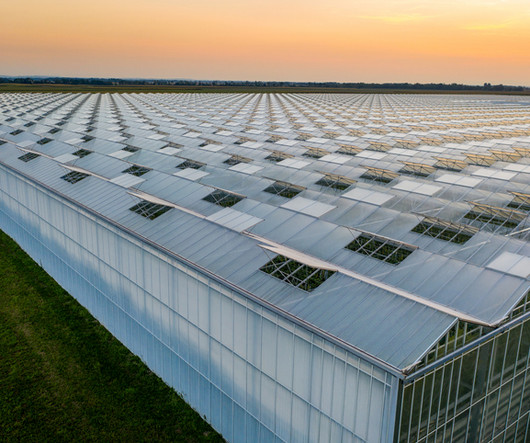
Grow Link
DECEMBER 27, 2022
Controlled environment systems can provide a more stable & optimal growing environment for medicinal crops, which can help improve their performance and yields.

Agritecture Blog
OCTOBER 24, 2022
Their greenhouses are also designed to ensure that greater amounts of light can enter through the southern extension of the greenhouse roof, with the north side of the roof configured with a reflective surface. In a controlled environment, “we can tweak all parameters to deliver optimal, maximum-efficiency yields.”

Agritecture Blog
APRIL 12, 2023
Associate professor of Horticulture, Neil Mattson, teaches a student in one of Cornell’s on-campus greenhouses. Credit: Greenhouse Product News. A student applies skills learned in a campus greenhouse at Stockton University. Credit: Cornell Chronicle. With the global population expected to reach 9.7 Credit: Stockton University.

Food Tank
SEPTEMBER 12, 2023
Mckinsey finds that human activity has already extended beyond the “safe operating space” for four of these boundaries: biodiversity loss, chemical and plastic pollution, nutrient pollution, and greenhouse-gas (GHG) emissions. As a sector, agriculture has the single largest direct impact on planetary boundaries.
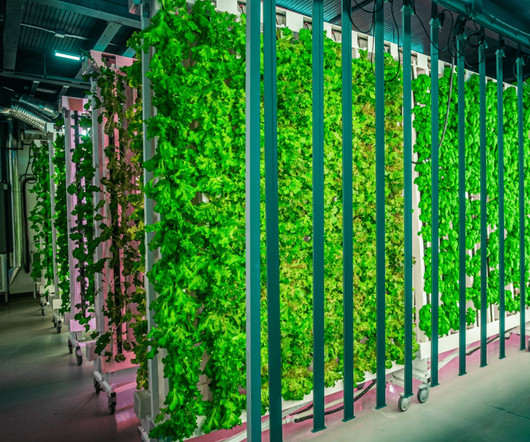
Agritecture Blog
FEBRUARY 6, 2023
These companies join a number of existing members, which include: Ceres Greenhouse Solutions , CropKing, Inc. These solutions are used in a wide variety of modern agricultural applications in both greenhouses and controlled environments. Third-party validation of the system or underlying technology is also factored in. Credit: iFarm.

Civil Eats
DECEMBER 4, 2023
These synthetic polymer products have often been used to help boost yields up to 60 percent and make water and pesticide use more efficient. All told, annual greenhouse gases released from plastic production, landfilling, and incineration total 850 million tons , or 4.5 As contamination rose, crop yields fell by 15 percent.
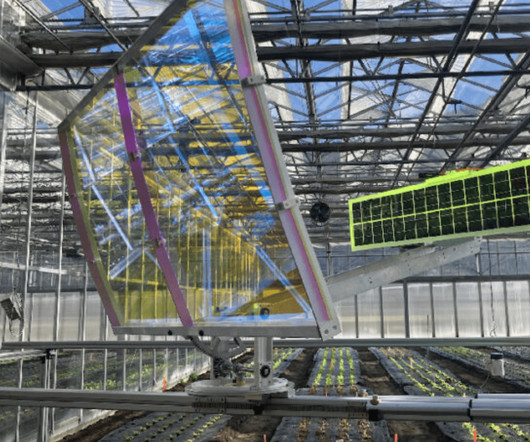
Agritecture Blog
JANUARY 3, 2023
This innovative solution can help farmers attain higher yields with less labor. Voltiris Voltiris’s solar panels can help power greenhouses. The extensive research on greenhouses and artificial lighting used in indoor farms led Voltiris to their solution. Credit: Serpentine Ventures.

Modern Farmer
MARCH 20, 2024
The choice to compare greenhouse gas intensity of soil-based urban agriculture systems with conventional farming systems brings up an inherently unfair comparison. carbon emissions) by another large number (yield per acre), you get a small number of carbon emissions associated with each serving of lettuce, for example. The result?
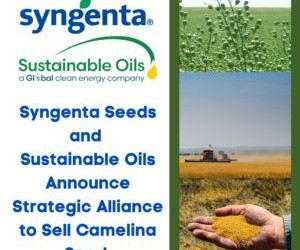
Agwired
AUGUST 30, 2023
It is valued for its low water usage, quick maturity, and resilient yields. Camelina protects land like a cover crop providing a range of environmental benefits, including soil health and reduced greenhouse gas emissions. Camelina can be planted on fallow land or land left idle between crop cycles.
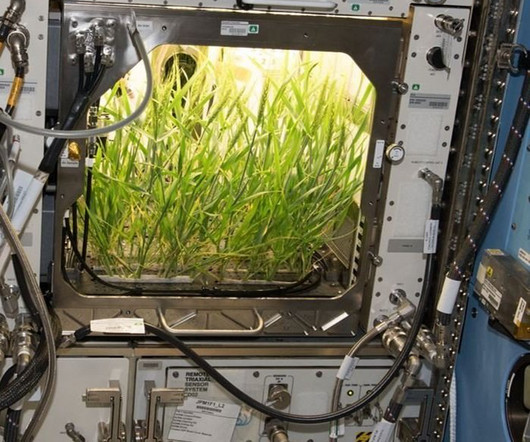
Agritecture Blog
MARCH 7, 2023
Davi Souza is a space entrepreneur, researcher, and greenhouse specialist working to develop sustainable methods for food production in space. Souza’s ultimate goal is to develop food production techniques that will be successful both in space greenhouses as well as extreme environments on Earth. Credit: Davi Souza.
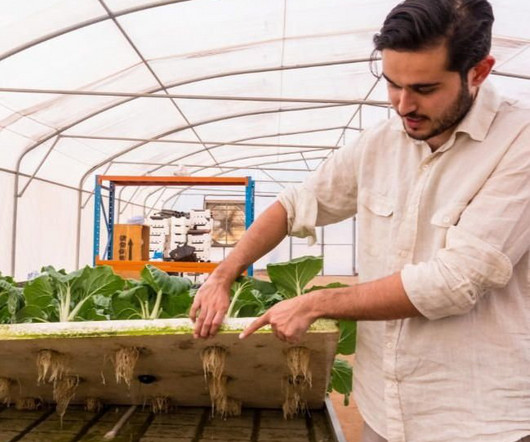
Agritecture Blog
MAY 26, 2023
Utilizing hydroponic greenhouses and isolated grow beds, they ensure the pristine quality of their produce while harnessing the power of data to minimize errors and risks. At the heart of each greenhouse lies cloud-based monitoring, facilitating optimal crop management. Greener Crop Inc. Greener Crop Inc. What sets Greener Crop Inc.

Agritecture Blog
APRIL 26, 2023
For example, a large percentage of tomatoes, cucumber and peppers sold at US food retailers are grown in greenhouses today. pound Greenhouse-grown, conventional: $6.28/pound pound Greenhouse-grown berries (non-organic) are priced at a 121% premium to conventional and a 70% premium to organically grown berries.

Agwired
AUGUST 15, 2024
Department of Agriculture (USDA) announced it intends to establish the Greenhouse Gas Technical Assistance Provider and Third-Party Verifier Program Advisory Council (informally known as the Growing Climate Solutions Act Advisory Council) and is seeking nominations for Council membership. Register here.

Agritecture Blog
SEPTEMBER 13, 2023
Vertical farms and greenhouses are seeing much more capital investment than they had in the past, and CEA businesses are improving their unit economics through new technologies which attract investment, as well. We also see growers with experience in greenhouses adapt well to vertical farming.

Agwired
JANUARY 31, 2024
SustainCERT conducted a rigorous audit of Eco-Harvest project outcomes for greenhouse gas (GHG) reductions and removals to be used for corporate partner agricultural supply chain reporting. Eco-Harvest Impact Units, and supporting programmatic documentation, are listed on SustainCERT’s VIVID platform. and Mike Lawler (R-N.Y.)

Modern Farmer
JULY 24, 2023
He powered the greenhouse with on-site solar panels, opted for natural pest control instead of synthetics and sold his products in recyclable, 99% plastic-free packaging. “It’s But with that speed comes massive greenhouse gas emissions from lighting, heating, cooling and dehumidification—powered mostly by petrochemicals. “The
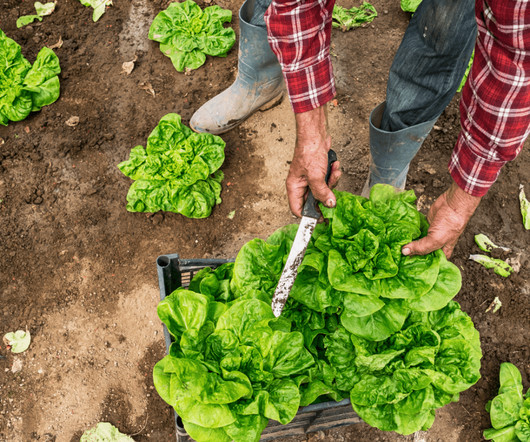
Agritecture Blog
MARCH 1, 2023
At an industry-average field-farming yield rate of 22,175 pounds per acre (for the more boutique varieties that are grown in CEA settings), that's a lot of lettuce! lbs of CO2e per pround of yield - still a far cry from the 8 pounds of CO2 per lb of yield carbon footprint of container farming. When we add another 0.31
Expert insights. Personalized for you.
We have resent the email to
Are you sure you want to cancel your subscriptions?


Let's personalize your content